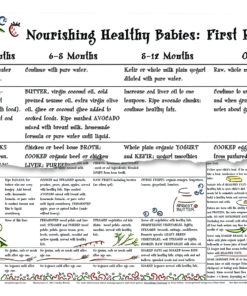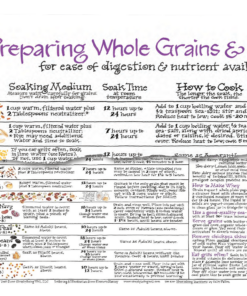Frightened of the GAPS Diet? Too complicated? Have no fear—it’s easier than you think!
When people tell me they have symptoms that just won’t heal, I always bring up the healing properties of food. I ask what they are eating and if they cook for themselves. Often, when I talk with people about the GAPS (Gut and Psychology Syndrome) diet, their eyes will either glaze over or they will look suddenly afraid. And then they will say that GAPS is too complicated, too difficult, or has too many rules to keep track of.
I am here to help you make sense of this wonderfully healing diet. It is easy to implement once you understand the following principle: GAPS is paleo plus cultured dairy. Yep. That’s it. Easy, right?
Surely by now you have heard the term “paleo” or “paleo diet,” which has gained so much popularity over the last several years that companies are producing and selling everything from paleo flour (made with almonds, cauliflower, cassava, or a combination, for example) to paleo snack bars, crackers, nut butters, pizza, bread, and many other things.
As this article explains, “The paleo diet is a nutritional approach that focuses on eating only foods that are high in nutrients, unprocessed, based on the foods that were available and eaten by humans in Paleolithic times.”
That being said, I question whether our hunter/gatherer ancestors consumed any processed paleo crackers and pizza in their diet, but I digress. Typical paleo foods include meats, poultry, fish, stock, eggs, vegetables, nuts and seeds, fruit, and saturated fats such as tallow, duck fat, chicken fat (“schmaltz”), lard, coconut oil, palm oil, ghee, and butter from pastured (grass-fed) animals.
So, what’s the difference between GAPS and Paleo? Not much. No kidding.
What is not on the Paleo diet? Grains and beans, soy, processed foods, and dairy.
What is not on the GAPS diet? Grains and beans (see note below), soy, and processed foods.
Note: A few legumes are allowed on the Full GAPS diet, after the gut has been healed and sealed. They include green beans, lentils, lima beans, and white navy beans. If you are going to go paleo to kick-start GAPS, best to keep them out.
This is really good news! If you want to try GAPS but do not know where to start, go paleo. A very easy place to start doing GAPS is to start eating paleo foods. To repeat, paleo foods are meats, poultry, fish, stock, eggs, vegetables, nuts and seeds, fruit, and the saturated fats I mention above.
Just the act of going paleo for a while will help you accomplish many things. You will get the benefits of cutting out processed foods and sugar. You will learn how to source high-quality foods (biodynamic or organic, fresh foods whenever possible to avoid GMOs and glyphosate). And you will cut out carbs, which can make you put on weight, drive up blood sugar, and feed pathogenic bacteria. After you have been paleo for a while, you can begin to experiment with adding in cultured dairy products, starting with cultured butter and/or ghee, and lots of it.
GAPS is paleo plus cultured dairy. That’s it! When you are ready to start adding yogurt, cultured cream, and kefir to your diet, you can learn how in my new book, The Complete Cooking Techniques for the GAPS™ Diet (see the Culturing Dairy section). Or set up a free consultation on my website, SimplyBeingWell.com.
Need help sourcing the best-quality food you can find? Start with your local chapter of the Weston A. Price Foundation.
Image from Monica Corrado.




